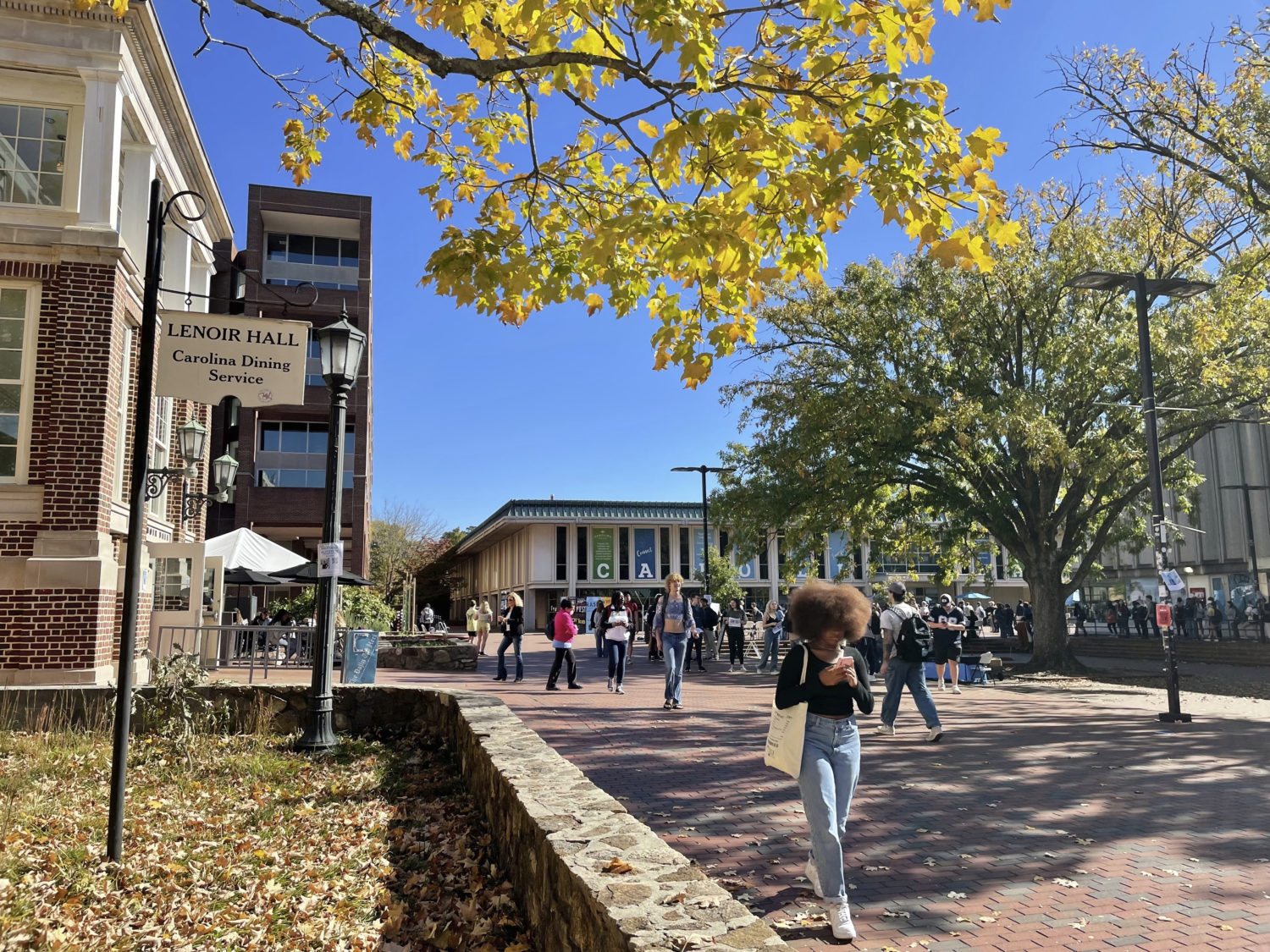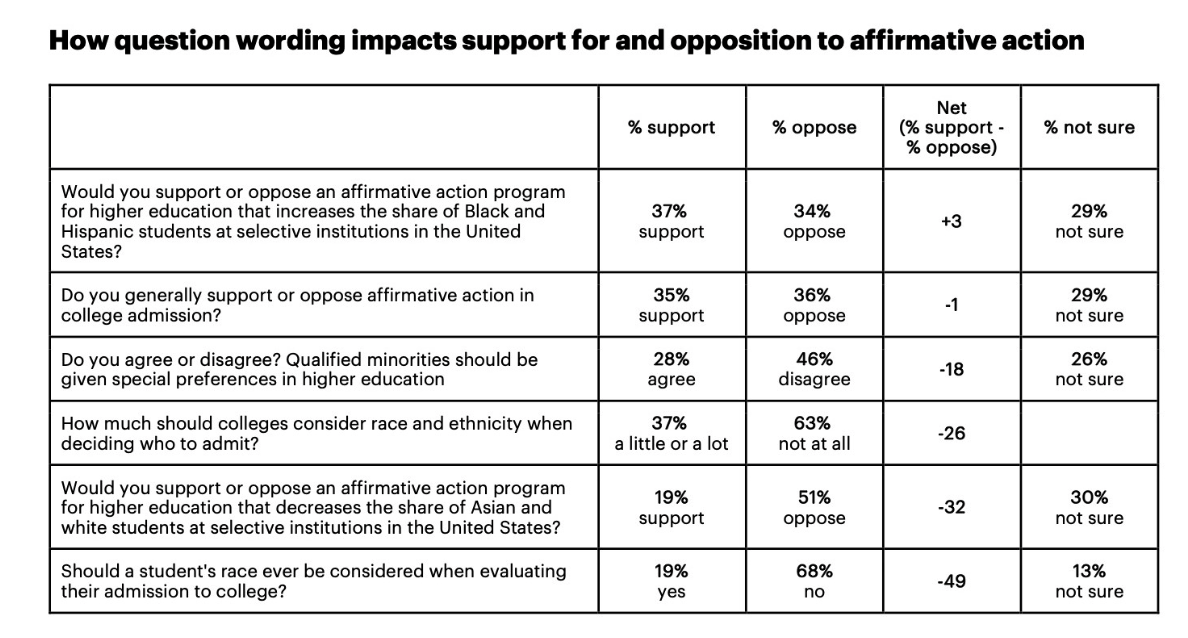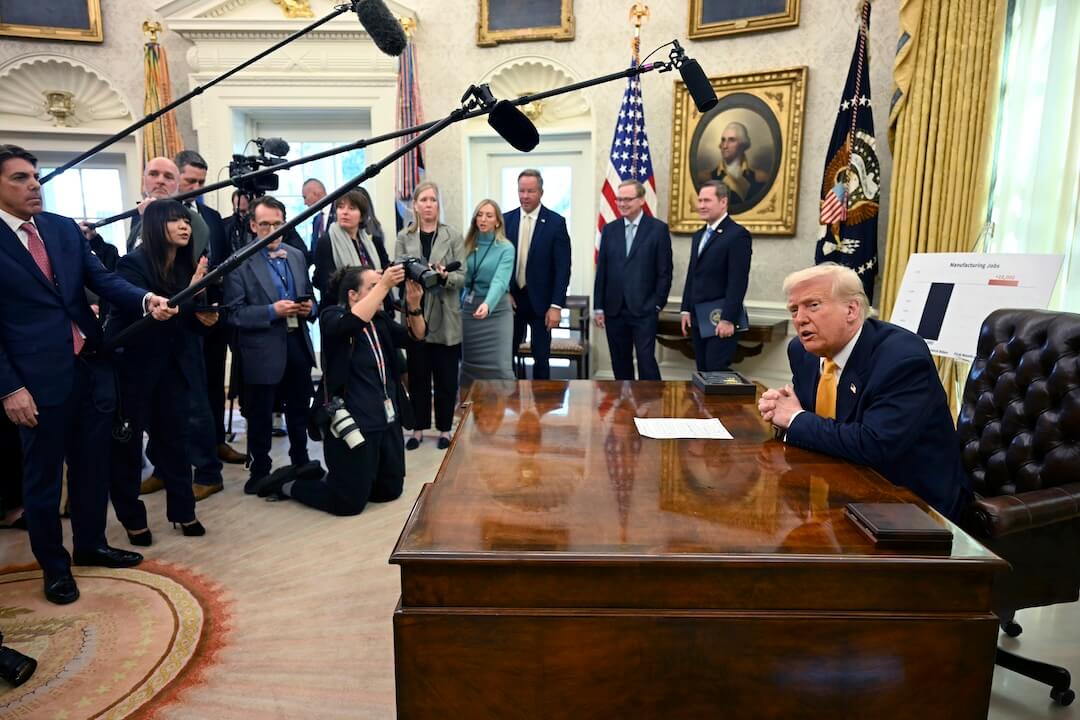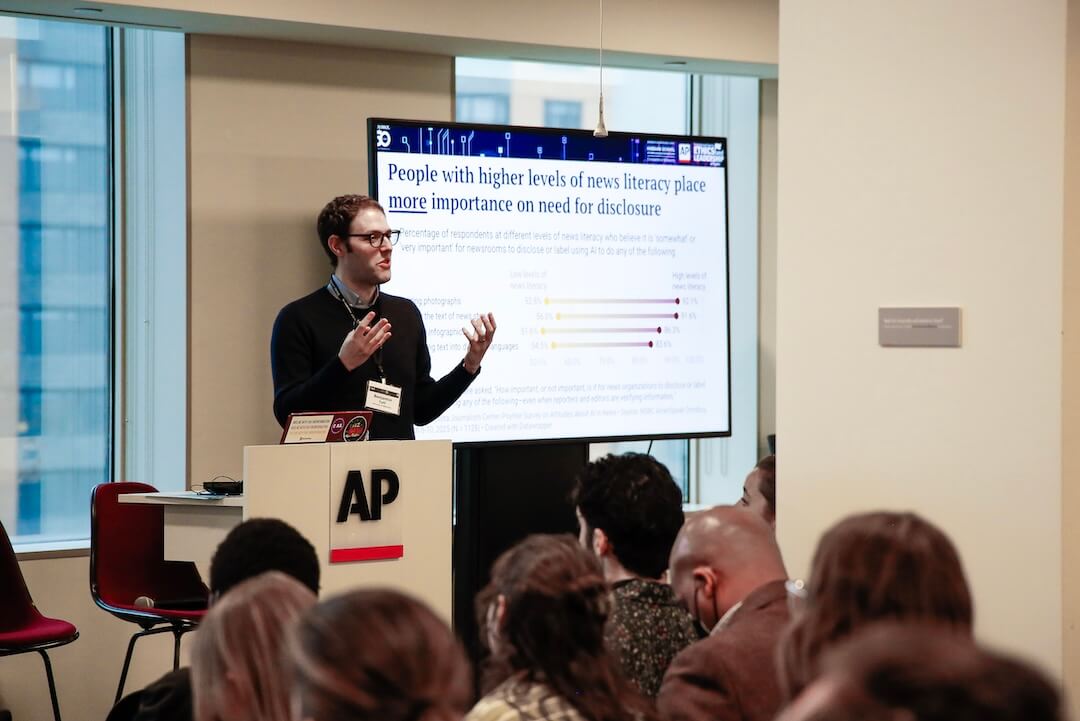
The Morning Meeting with Al Tompkins is a daily Poynter briefing of story ideas worth considering and other timely context for journalists, written by senior faculty Al Tompkins.
The U.S. Supreme Court today hears arguments in a case that could determine the future of affirmative action for college admissions. It is a contentious issue that has wound through courts for decades, but today the makeup of the court simultaneously includes fewer white males and more conservative justices than past courts that considered the issue.
While the cases before the Court involve Harvard University and the University of North Carolina, 40% of all U.S. universities — and 60% of universities that have a selective admissions process have some form of affirmative action process in place. However, the Court rules in the Harvard and North Carolina cases, every school that considers race in admissions could be affected by the ruling.
The Washington Post explains:
The court on Monday will be reviewing the admission policies at Harvard and the University of North Carolina, cases brought by longtime affirmative action opponent Edward Blum and his Students for Fair Admissions. After extensive trials, lower courts found each university complied with the Supreme Court’s precedents about considering race as only one factor in building diverse student bodies.
Given those rulings — and just six years after the Supreme Court approved a similar race-conscious admissions program at the University of Texas — analysts say it seems likely the right wing of the court accepted the new cases to redefine the law about race, not to affirm the lower courts.
SCOTUSblog provides more background that helps you understand what is at stake in these cases:
In 2003, the Supreme Court ruled in Grutter v. Bollinger that universities may consider race in their admissions processes as part of their efforts to achieve diversity on campus. On Oct. 31, the justices will hear oral arguments in a pair of cases asking them to overturn Grutter and outlaw race-based affirmative action in higher education altogether.
The challengers urge the justices to rule that the Constitution and federal civil rights laws bar any consideration of race in college admissions. But the universities at the center of the dispute, as well as their supporters, counter that overruling Grutter would have sweeping effects well beyond university admissions, affecting everything from the performance of U.S. businesses to the practice of medicine in an increasingly diverse society.
Both of the lawsuits were filed in federal court in 2014 by a group called Students for Fair Admissions, which describes itself as “dedicated to defending the right to racial equality in college admissions.”
This is just the latest time when the Court may upend a precedent that has been in place for decades, not unlike the recent decision on abortion rights. And again, there is a lot of disagreement about how schools ensure diversity while not favoring on racial group over another. Fivethirtyeight summarized some recent polling on the issue:
A Washington Post/Schar School poll conducted Oct. 7-10 found that near-identical shares of Americans supported a Supreme Court ruling “banning colleges and universities from considering a student’s race and ethnicity when making decisions about student admissions” (63 percent), and thought programs that promote racial diversity in higher education are a good thing (64 percent).
YouGov’s polling on affirmative action show just how divisive the issue can be:
A roughly equal share of people say they support (35%) and oppose (36%) affirmative action in college admissions. People who have a college degree are more likely to support than to oppose affirmative action, while people without a degree are more likely to oppose it than to support it. While Black and Hispanic Americans are more likely to support affirmative action than to oppose it, white Americans are more likely to oppose it than support it.
But, journalists, be careful in reporting the polling around this issue because the way the pollster asks the question has everything to do with how people respond. YouGov got very different responses when they asked people if they would support a program that would “increase the share of Black and Hispanic students,” (37% yes, 34% no) versus a version of the question that asked about support for a program that would “decrease the share of Asian and white students.” (19% yes, 51% no)
Six tips for reading and evaluating midterm political polls
While I am on the topic of polling, Washington Post polling director Scott Clement put together a dandy list of tips for reading political polls and putting them in context. Scott also gives you some things to look out for:
- Don’t sweat small “leads” or changes: Polls aren’t incredibly precise, so don’t put too much stock in small margins. A three-point lead means a race is really competitive. Same goes for when a candidate’s support changes by just a few points.
- Browse a poll’s full-results page: Pollsters ask lots of questions! Usually news stories report on the poll’s most interesting takeaways, but you can click through to the original results to give you more insight into voter attitudes.
- Look at what voters think about the candidates: Are they supporting a candidate because they like them? Or because they simply hate the opponent? How favorably or unfavorably voters view candidates can help explain a campaign’s direction in its final weeks. (For example, undecided voters are more likely to go for a candidate who voters in general view favorably.)
- See whose supporters are more motivated: Polls can help predict turnout. It’s important to both parties to know whether the base is going to show up to vote.
- Review polls from past elections: Context matters. Comparing poll results to past results can expose shifts in voter attitudes.
- Be wary of outliers and campaign-sponsored polls: If a poll has results that are sharply different from other recent surveys, be skeptical. It’s possible that the new poll is showing an abrupt shift in attitudes, but it’s more likely just an outlier. Also: Take polls sponsored by candidates or advocacy groups with a large grain of salt. Independent polls commissioned by news organizations or other nonpartisan sponsors are a better resource.
Scott goes into some depth on all of these on the Post’s website. I would urge every newsroom and university journalism class to circulate this primer as election day approaches.
Speeding tickets for e-bikes
My KUSA-TV Denver reporter friend is a new-ish e-bike owner and turned me on to some fancy bikes that caught my imagination because some of them go pretty fast. I am thinking it could be a replacement for my love for motorcycles, which my wife does not share. But then Jeremy Jojola filed a story saying cops are now ticketing people who are going too fast on bike trails.
KUSA reports:
Thanks to battery-powered pedal assist on e-bikes, it can be quite easy to break the 15-mile-per-hour speed limit on city-owned trails and parks, which could result in a $100 citation.
More Denver park rangers with the parks and recreation department will be undergoing speed enforcement training in the coming weeks, 9NEWS has learned.
For the moment, he says, rangers are not handing out lots of tickets, but will if they get complaints about speeding bikes, scooters and such. Denver emergency workers have responded to 91 incidents involving cars and e-bikes this year.
The New York Post said it documented that about a third of motorized riders were speeding in the city’s bike lanes and greenspaces. (That figure included mopeds, dirt bike motorcycles and e-bikes.)
Over the past week, a team of Post journalists used a radar gun to track speeders on paths crossing the Williamsburg, Brooklyn, Manhattan and Queensboro bridges, as well as bike lanes in Midtown and at Hudson River Park.
Of the 486 two-wheelers clocked, 167 – or 34% — sped above the 25-mph max, including some as high as 35 mph.
New Yorkers said they’re fed up with bike-lane lawbreakers.
“It’s a huge problem!” barked Peter Epstein, an avid 60-year-old bicyclist after pedaling along the scenic bike lane on Manhattan’s West Side. “People are walking by” because they have “the green light to cross the path, and these [motor] bikes are zooming right up to them; there’s not even time for anyone to react. It’s just crazy.
Bike Portland covers the peddling scene in a bike-centric town. And I noticed a post that questioned whether the city should rethink the timing for its bike signals, which are like traffic lights for bikers.
The average speed of Portland’s bike fleet has gone up — and will continue to go up — in the coming years. Our bike-specific infrastructure should reflect these higher speeds not just out of respect for accuracy, but because when it comes to choosing a transportation mode, speed matters. Faster bike trip times will make cycling more competitive with driving and will encourage more people to ride.
What would our bike maps look like if we assumed more people were using e-bikes? I think we’d have a lot more direct routes and shorter travel time estimates, both of which would make bicycling even more attractive than driving for more people.
And if you thought people were concerned about bike theft with a $750 commuter bike, wait until they drop $3-4,000 on an e-bike! In the e-bike future, folks will simply not ride to a destination that doesn’t have secure bike parking.
Was ARPA supposed to pay for police department shooting ranges, rifles, tasers, jails and bonuses?
$350 billion from the American Rescue Plan (ARPA) was supposed to help local governments recover from the COVID-19 pandemic. It is the biggest infusion in local funding in decades. And local government could vote to spend the money pretty much any way they wanted.
The State of Delaware is spending $2.2 million on a police mobile command vehicle. Chautauqua County, New York, bought $44,000 in new police guns. Lancaster County, Nebraska, bought three body scanners; Josephine County, Oregon, bought the sheriff’s department a $300,000 armored police vehicle and Salt Lake City, Utah, is using $6.6 million to retain and recruit police officers. Alhambra, California, used $17,500 to pay for a police dog.
The Marshall Project compiled a list of how millions of your tax dollars are being spent. Interestingly, 10% of the COVID recovery fund went to public health. Marshall Project journalists found some communities using “COVID prevention” as a reason for their purchases:
Many local governments report that new policing equipment would help them to curb the spread of COVID-19. Oneonta, Alabama, said their purchase of new tasers with longer ranges would mean “officers will not have to get so close to the perpetrator.” Danville, Virginia, plans to spend more than $1.3 million to expand their fleet to allow for “proper sanitization” of vehicles.Ken Larking, city manager of Danville, said having additional police cars means officers can take them home after work and not worry about sharing unsanitized vehicles with other officers.
How does a renter with an electric car find a charging station?
NPR raised an interesting question: What does someone who rents a home or apartment do for a charging station? Nationwide, there is about one public charging station for every 12 electric vehicles on the road in America now, but the number of electric vehicles is expanding a lot faster than the nation is installing charging stations. Some cities, like Portland, Oregon, would require apartment complexes to provide electrical connections to half of their parking spaces, and in the smallest apartment complexes, all of the parking spaces would have to have electrical charging stations.
“We have a really large challenge right now with making it easy for people to charge who live in apartments,” said Jeff Allen, executive director of Forth, a nonprofit that advocates for equity in electric vehicle ownership and charging access.
Cities have to understand that “promoting electric cars is also part of their sustainable transportation strategy. Once they make that mental shift, there’s a whole bunch of very tangible things they can — and should — be doing.”
A briefing prepared for the U.S. Department of Energy last year by the Pacific Northwest National Laboratory forecasts a total of just under 19 million electric vehicles on the road by 2030, with a projected need for an extra 9.6 million charging stations.
Don’t fear the asteroid
Maybe you have seen the hyperventilating headlines about an asteroid that is coming “close” to earth tomorrow. Fox News said:

(Fox News)
The asteroid will be 1.5 million miles from earth. But then in relative space terms, anything that comes within four and a half million miles of earth is a “potentially hazardous asteroid.” Newsweek called 1.5 million miles “a close shave” while Hindustan Times warned “Wow! 2500-foot hazardous Asteroid 2022 RM4 coming towards Earth, warns NASA.”
The good news, besides the fact this rock won’t hit us, is that NASA says there are not asteroids heading our way for another century. That version of the story might not generate page views, but then truth is sometimes boring.









